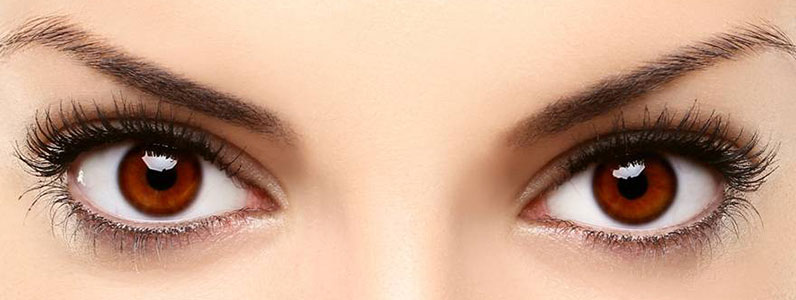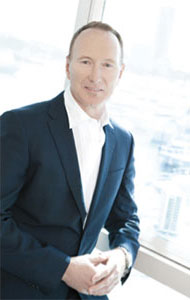
Historically, eyelid surgery (Blepharoplasty) targeted the fat pads and the skin excess around the eyes. It was almost a contest to see how much fat could be reduced and how much the skin could be tightened.

Ageing of the upper eyelid can be as much characterised by recession and hollowing as by skin excess and fat bulges. Modern upper blepharoplasty entails a much more conservative excision of skin with accentuation of the eyelid crease and preservation (even a restoration) of the fullness between the upper lid crease and the eyebrow.
Young eyes are full eyes. The robust young soft tissues below the eyebrow frame the eye beautifully and provide an attractive appearance. Whilst these fat pads can certainly bulge to excess, only a very conservative reduction is usually required to provide an attractive contour there.
Aggressive excision of fat or skin from the upper lid can create a hollow empty look that tends to make the face look more aged and unwell.
With the advent of soft tissue injections, experienced injectors can help rejuvenate the upper lid by restoring some of the fullness to the region with hyaluronic acid injections. This is not an area for the novice injector as it has significant structures that are at risk there. However the products can work well to enhance the contour and restore that youthful look to the eyes.
The lines at the corners of the eyes (crow’s feet) are usually not effectively treated by surgery. Trying to pull the skin so tight as to smooth these out can have disastrous consequences. These lines are due to the fact the muscles around the eyes (orbicularis occuli) are very active and with repeated movement create creases there. Anti-wrinkle injections is remarkably effective at improving these lines and its judicious use can provide a refreshed but natural look to the eye there. A gentle elevation of the lateral brow may also result which can look quite attractive.
For the constant fine lines affecting the lower lids some improvement can be expected with lower blepharoplasty using an incision just below the eyelashes and extending out into one of the crow’s feet. Again the fat pads are judiciously adjusted with some being reduced in a conservative way or gently relocated to create a better contour there.
Attempt to pull the skin smooth with excessive tension is almost uniformly disastrous. The lower lid is a frail structure and excessive tension placed upon it will result in its descent with an unattractive “hound dog” look (ectropion).
Ectropion is the most difficult to correct complication after lower blepharoplasty and plastic surgeons are keen to avoid it at all cost. One way may be to approach the fat pads through the conjunctiva (ie. Behind the lower eyelid itself, avoiding a skin incision.) The fat pads can be approached in this way and adjusted as above whilst finer lines on the skin can be dealt with other techniques such as laser resurfacing.
In the mid 90’s CO2 laser resurfacing was done too aggressively and scarring and loss of skin colour resulted. These days with fractionated devices or more reliable modalities a gentle resurfacing of these lines can be achieved with vastly reduced risks.
Not uncommonly a support procedure (canthopexy/canthoplasty) is done to help support the eyelid and reduce the risk of Ectropion.
More sophisticated appraisal of facial aesthetics may realise that bulging lower lid fat pads are in fact more apparent than real. The can be made more apparent by recession of the cheek fat pads and restoration of volume can help to mask them and greatly improve the aesthetics of the face.
In much the same way heaviness in the upper lids may in fact not be entirely of upper lid origin. Brow descent can crowd the upper lids and create the appearance of heaviness there. Thus key-hole brow lift combined with upper blepharoplasty can give a more attractive and complete rejuvenation of the upper face.
Again brow lifting should not be done to excess. Particularly on a male a high brow can look quite strange and feminizing. With brow lift it is more a case of creating a youthful shape to the brow usually a gentle lateral arch than actually how high above the eyelid the brow is moved. Restoring the natural youthful volume to the area behind the eyebrow and to the temples also can help to rejuvenate the upper face.
Careful assessment and discussion of alternative is required before embarking upon a treatment planned to be suit the individual. Non- surgical options need to be considered particularly in the younger patients as they can create quite natural and attractive results, but they should not be used where surgery is likely to give a better result.
It all comes down to careful assessment, information about alternatives and risks and good advice.
Further Reading Related to Blepharoplasty
- Upper Eyelid Surgery – Blepharoplasty Sydney for Saggy & Droopy Eyelids by Dr Michael Kernohan
- Eyelid Rejuvenation Blepharoplasty | Dr. Guy Watts Perth
- Droopy Eyelids | Blepharoplas – Cheshire Cosmetic Surgery
- OLD Upper Eyelid Surgery Guide by Dr Carmen Munteanu
- Blepharoplasty Eyelid Surgery | My Klinik
- Blepharoplasty Sydney – Eyelid Surgery – Upper and Lower
